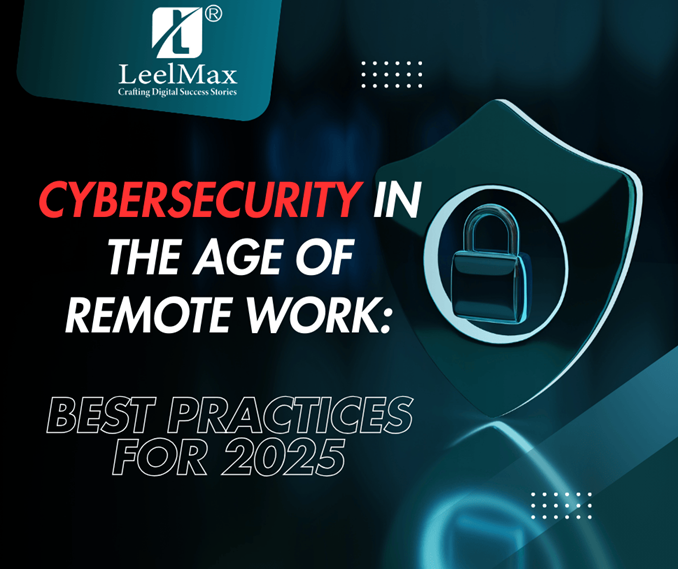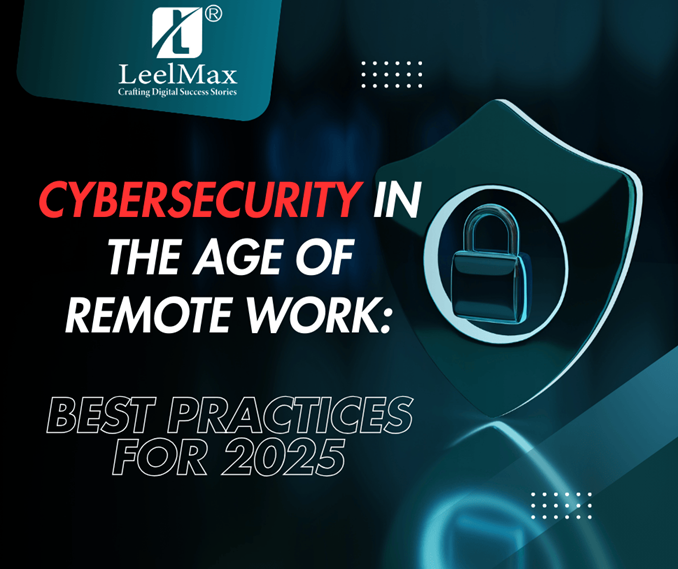
Introduction
The shift to remote work has transformed the business landscape, offering flexibility and productivity but also presenting unique cybersecurity challenges. As employees access company systems from various locations and devices, the risk of cyber threats increases significantly. This blog explores the best practices organizations should adopt to ensure robust cybersecurity in 2025, empowering employees while protecting company assets.
Understanding the Cybersecurity Landscape
The rapid transition to remote work has expanded the attack surface for cybercriminals. According to Cybersecurity Insiders, 70% of organizations report increased cyber threats since adopting remote work policies. Common threats include phishing attacks, ransomware, and insecure home networks. Employees often access sensitive information from personal devices that lack adequate security measures, making them more vulnerable to attacks.
Phishing attacks have become more sophisticated, using social engineering tactics to trick employees into revealing sensitive information. Ransomware attacks have also surged, exploiting the urgency of remote work. Given these challenges, businesses must implement effective cybersecurity strategies to safeguard their operations and data.

Best Practices for Cybersecurity in 2025
-
1. Employee Training and Awareness
Training employees is essential for building a cybersecurity-conscious workforce. Continuous education on recognizing phishing attempts, safe browsing habits, and secure password practices is crucial. Regular training sessions and simulations help reinforce this knowledge. Research by the Ponemon Institute indicates that organizations with robust security awareness programs can reduce cyber incident risk by up to 70%. Empowering employees to act as the first line of defense against cyber threats is vital.
-
2. Multi-Factor Authentication (MFA)
Implementing MFA is a critical security measure. By requiring users to verify their identity through multiple methods—such as a password and a text message code—MFA adds an essential layer of protection. Microsoft reports that MFA can block 99.9% of automated attacks, making it a crucial step for organizations. Encouraging employees to use MFA on their accounts can significantly enhance overall security.
-

3. Secure Communication Tools
With remote teams relying heavily on digital communication platforms, selecting secure tools is paramount. Organizations should prioritize platforms that offer end-to-end encryption to ensure sensitive discussions remain confidential. Secure messaging services and video conferencing tools help protect proprietary information. Popular platforms like Signal and Microsoft Teams provide robust security features that mitigate risks associated with online communications.
-
4. Regular Software Updates
Keeping software up to date is a fundamental cybersecurity practice. Cybercriminals often exploit vulnerabilities in outdated software, making regular updates critical. Organizations should implement automated update systems for operating systems and applications to ensure they receive the latest security patches. Employees should be encouraged to install updates promptly, as these not only fix security loopholes but also enhance overall system performance.
-

5. Virtual Private Networks (VPNs)
VPNs are vital for securing remote connections. By encrypting internet traffic, a VPN creates a secure tunnel for data transfer, protecting sensitive information from potential eavesdroppers. Organizations should mandate the use of VPNs when employees access company resources over public Wi-Fi networks. Training employees on effective VPN use ensures that all remote connections are secure, significantly reducing the risk of data breaches.
-
6. Regular Security Audits
Conducting regular security audits is essential for identifying vulnerabilities and assessing existing cybersecurity measures. Comprehensive reviews of security protocols—including network configurations, access controls, and incident response plans—help organizations strengthen their defenses. Involving third-party security experts can provide valuable insights and recommendations for improvement.
-
7. Incident Response Planning
Having a well-defined incident response plan is crucial for organizations. This plan should outline steps to take in the event of a cybersecurity breach, including communication protocols and recovery procedures. Regularly reviewing and updating the incident response plan ensures that it remains relevant to evolving cyber threats. Simulated exercises can help employees understand their roles during an actual incident.
Emerging Technologies in Cybersecurity
-
1. Artificial Intelligence (AI)
AI is revolutionizing cybersecurity by enhancing threat detection and response capabilities. AI-driven systems analyze vast amounts of data in real time, identifying anomalies before they escalate. Businesses can leverage AI to automate incident responses, improving efficiency and reducing human error. Additionally, AI can continuously learn and adapt to emerging threats, making it an invaluable tool in combating cybercrime.
-
2. Endpoint Detection and Response (EDR)
With an increase in remote work, endpoint devices such as laptops and mobile phones are prime targets for cyber threats. EDR solutions are essential for monitoring and protecting these devices. They can detect suspicious activities, quarantine affected devices, and alert IT teams in real time. Implementing EDR solutions significantly reduces the risk of data breaches and ensures a secure remote work environment.
-
3. Zero Trust Security Model
The Zero Trust security model is gaining traction as organizations recognize the need for stringent security measures. This approach operates on the principle of "never trust, always verify," requiring continuous authentication and authorization for users, regardless of their location or device. Implementing a Zero Trust model can enhance an organization's security posture by minimizing unauthorized access and lateral movement within the network.
Conclusion
As remote work becomes a permanent fixture for many organizations, comprehensive cybersecurity measures are essential. By implementing best practices such as employee training, multi-factor authentication, secure communication tools, and regular software updates, businesses can create a resilient defense against evolving cyber threats.
Additionally, leveraging emerging technologies like AI, EDR, and the Zero Trust model will further strengthen security measures. Ultimately, fostering a culture of security awareness will empower employees to act as vigilant defenders, ensuring a safe and productive remote work environment.
As we approach 2025, proactive cybersecurity strategies will be crucial in ensuring organizations can thrive in a digital-first world. A continued commitment to cybersecurity not only protects sensitive information but also builds trust with customers and stakeholders, laying the foundation for long-term success in an increasingly interconnected landscape.







Comments
Nice Blog
ReplyHello this is your third blog